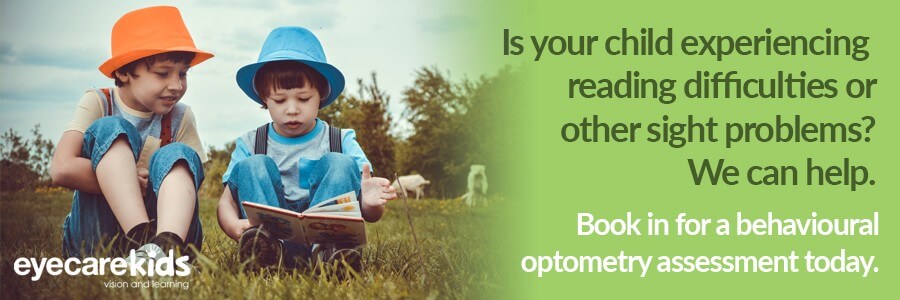You discover your child has been colouring leaves purple and Santa green. A product of their active imagination? Unique artistic expression? Early manifestations of individuality and willful do-as-I-please candour?
Perhaps your child could be colour blind.
How do we see colours?
First, we have to get a bit technical. When we look at objects, our retina, the light-sensing tissue that lines the back of our eyes, converts light rays into impulses that travel through the optic nerve to our brain where these impulses are interpreted as the images we see. Our retina has photoreceptor cells called cone cells, which are responsible for our ability to see colour.
Sir Isaac Newton observed that colour is not inherent in objects. The objects’ surface reflects some colours and absorbs all the others—and we perceive only the reflected colours. So when you see a red apple, it means the surface of the apple reflects wavelengths you see as red and absorbs all the rest. An eggplant is purple because it reflects wavelengths you see as red and blue. Thus, an apple in itself is not inherently red, nor is an eggplant inherently purple.

When someone is “colour blind,” it does not mean they can’t see colour. It means how their eyes and brain work together to perceive colour is different from people with normal colour vision. Light has wavelength variations that enable people to see an array of colours. When the retina fails to respond appropriately to these variations, there is a colour vision deficiency.
One in ten boys has a colour vision problem.
Colour blindness, more accurately known as colour vision deficiency (CVD), affects boys more than girls. The human cell has a pair of sex chromosomes—males have the X and the Y chromosomes, while females have two X chromosomes. The gene responsible for colour blindness is carried on the X chromosome. Since males only have one X chromosome, if the functional gene of colour perception mutates, it is sufficient to cause colour blindness. Females, on the other hand, have two X chromosomes, so a functional gene of just one X chromosome is enough to compensate for the loss of the other.
Signs your child could be colour blind:
- Mixing colours
- Difficulty naming colours
- Difficulty telling if colours are blue and yellow or red and green
- Seeing colours as “washed out”
- Rapid eye movement
Children with colour vision deficiencies don’t do as well as their classmates during school activities that require colouring or colour differentiation. If this is not diagnosed and no intervention is done, a child with colour vision deficiency may think he is not smart enough, even though he is doing well or even excelling in other areas in school. Such feelings of inadequacy will loom over the child and cause learning problems and low self-esteem. A negative self-image during a child’s formative years could carry well onto adulthood.

So if your child assigns a different colour to objects other than the shade that nature intends, visit a behavioural optometrist for an assessment. If indeed your child is found to have colour vision deficiency, behavioural optometrists will provide counseling and the right adaptation methods that will help your child. There is no cure for color blindness, but early detection will prepare you and your child for the things you need to do, like informing your child’s teacher of his condition, training him to memorise the order of traffic lights, and teaching him the colours of common items to serve as a frame of reference when discussing colours with other people. There are strategies in place that can help colour-deficient patients excel.
With the right adaptation methods and guidance from a behavioural optometrist, you will be pleased to know that children with colour vision deficiency do well at home and in school and have grown up to be promising young adults and professionals. Your child can live a quality and meaningful life despite being colour vision deficient. Being colour blind could even then just be, at most, a relatively minor inconvenience.

